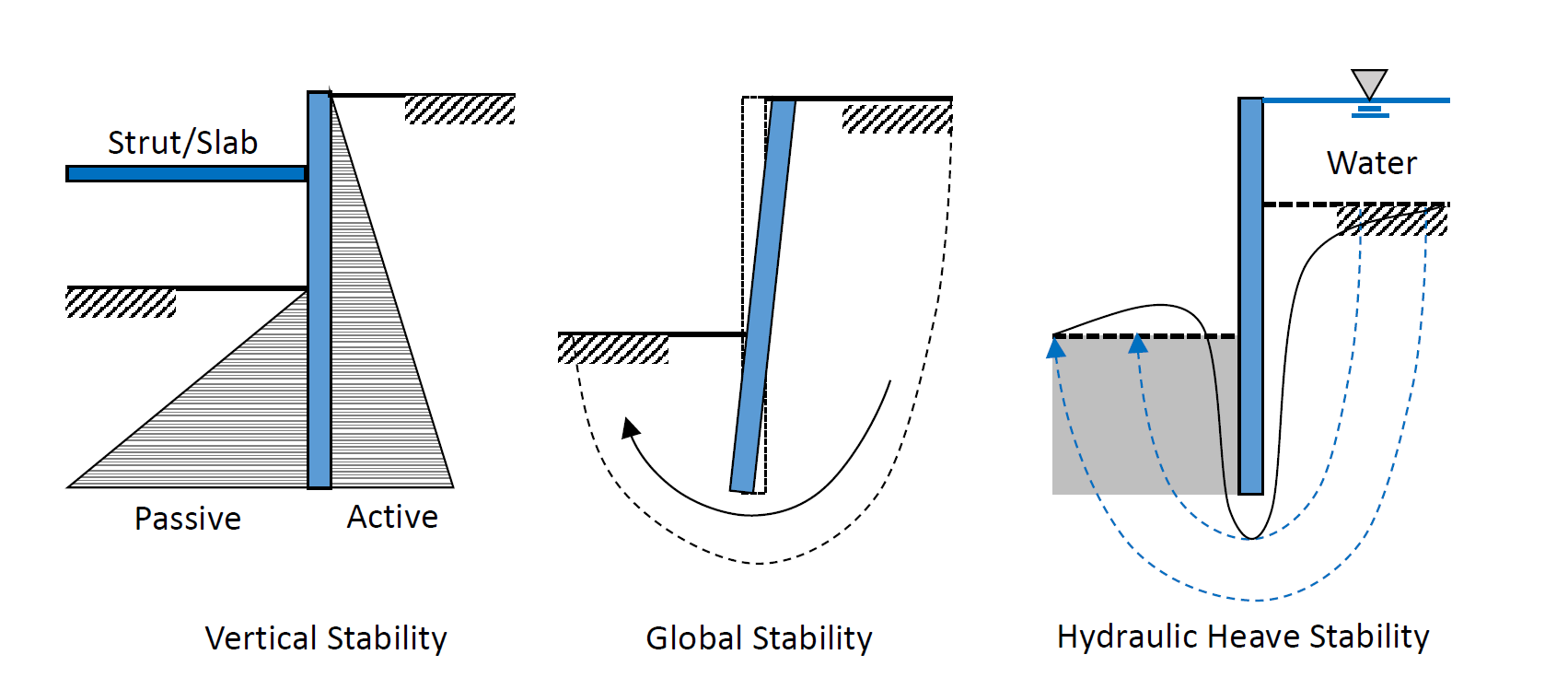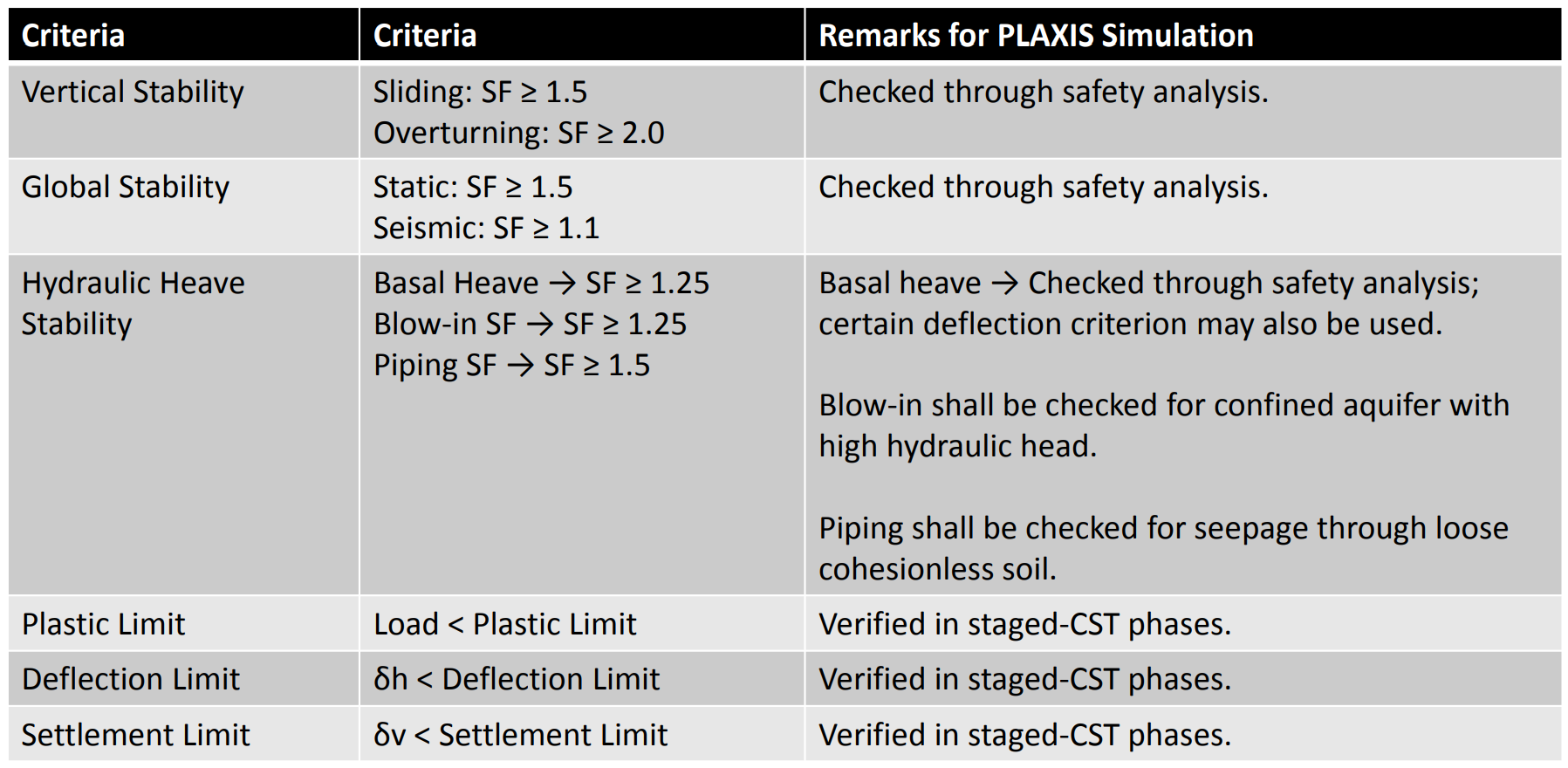Deep Excavation Design Review according to SNI 8460:2017

In many construction projects at which the working space is limited, a vertical deep excavation is often the only viable option. Technically, SNI 8460:2017 classifies the deep excavation as an excavation with depth greater than 3.0 m. For maintaining soil stability, a combination of embedded wall, struts, ground anchor, etc., are commonly used together.
While a simple problem may be analytically resolved by means of limit equilibrium analysis; a complex problem involving many structural elements may not be easily resolved. PLAXIS 2D offers a powerful geotechnical tool to solve such problem through a FEM simulation. This software offers a fully-coupled hydro-mechanical simulation with various soil models and structural elements that suits the needs of geotechnical engineers.
This presentation shows the general design criteria of deep excavation as required by SNI 8460:2017. An example of deep excavation simulation is also shown with Mohr-Coulomb and Hardening Soil model; the following structural elements are used: plate, node-to-node anchor, fixed-end anchor, embedded beam row.
The summary of Deep Excavation Design Criteria is as following.

To download the the full PPT slides, Click here:
Deep Excavation Design according to SNI 8460-2017.pdf